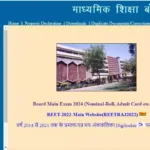Imagine yourself, years down the line, with wrinkles of wisdom etched on your face and a lifetime of experiences tucked under your belt. But will financial security be part of that picture? The National Pension Scheme (NPS) can help you paint a brighter picture of your retirement. Let’s delve into what NPS is, how it works, and if it’s the right fit for you.
Understanding NPS: Your Roadmap to Retirement Savings
NPS is a voluntary, government-backed pension scheme launched in 2004. It functions on a defined-contribution model, meaning the amount you receive after retirement depends on the contributions you and (if applicable) your employer make throughout your working years. Unlike traditional pension plans, NPS invests your contributions in market-linked instruments like equities and bonds. This potentially offers higher returns compared to fixed-deposit schemes, but also carries some degree of investment risk.
Who Can Enroll in NPS?
NPS is open to most Indian citizens between the ages of 18 and 70. Here’s a breakdown of eligibility:
- Government Employees: For all Central Government employees who joined service on or after January 1st, 2004 (except armed forces personnel), NPS is mandatory. State governments can also adopt NPS for their employees.
- Private Sector Employees: Some private companies offer NPS as a retirement saving option for their employees. In this case, both the employer and employee can contribute to the NPS account.
- Self-Employed Individuals: If you’re self-employed, you can voluntarily enroll in NPS to build your retirement corpus.
Here’s a bonus tip: NPS also allows Non-Resident Indians (NRIs) and Overseas Citizen of India (OCI) cardholders to open Tier-I NPS accounts. This enables them to plan for their retirement back in India.
The Two-Tier Structure of NPS: Flexibility for Your Savings
NPS offers a two-tier account structure to cater to your saving and investment needs:
- Tier-I Account: This is the main retirement savings account. Contributions made to Tier-I are locked in until you reach the age of 60, with some exceptions for partial withdrawals. Tier-I contributions qualify for tax deductions under Section 80C of the Income Tax Act.
- Tier-II Account (Optional): This is an add-on investment account that functions like a regular investment account. You can invest in various market-linked instruments and withdraw funds with some limitations. Tier-II contributions do not qualify for tax deductions under Section 80C.
NPS: Weighing the Pros and Cons
Pros:
- Tax Benefits: Contributions to Tier-I NPS accounts qualify for tax deductions under Section 80C. Additionally, on maturity, up to 60% of the corpus is tax-free.
- Market-Linked Returns: NPS invests your contributions in market-linked instruments, potentially offering higher returns compared to traditional pension plans.
- Portability: Your NPS account is portable across different employers and locations. This is particularly beneficial for those who frequently change jobs.
- Government Regulation: NPS is regulated by the Pension Fund Regulatory and Development Authority (PFRDA), ensuring transparency and security.
Cons:
- Lock-in Period: Funds in Tier-I accounts are largely locked in until retirement, with limited withdrawal options.
- Market Risk: As NPS invests in market-linked instruments, returns are not guaranteed and there is a possibility of losses.
- Management Fees: There are annual charges associated with managing your NPS account.
Conclusion: Taking Control of Your Retirement Future
NPS offers a unique opportunity for individuals to build a substantial retirement corpus. While it may not be suitable for everyone, it’s definitely worth considering, especially for those seeking a tax-efficient and potentially high-return investment option for their golden years. Remember, a comfortable retirement doesn’t happen by chance – it requires planning and proactive saving. NPS can be a powerful tool to help you achieve that goal.
Remember: Before enrolling in NPS, carefully consider your risk appetite, investment horizon, and financial goals. Consulting a financial advisor can be helpful in making an informed decision.




